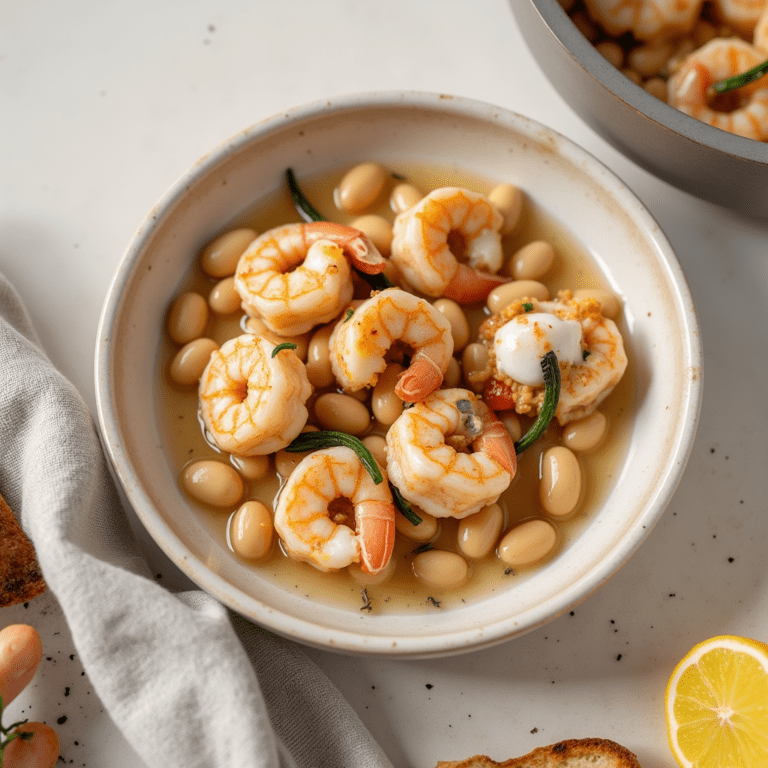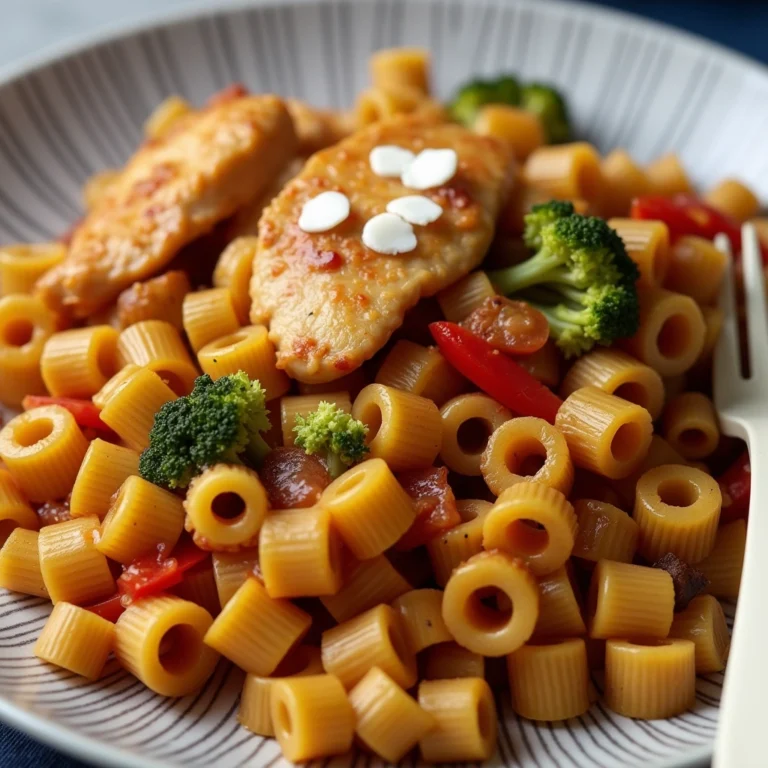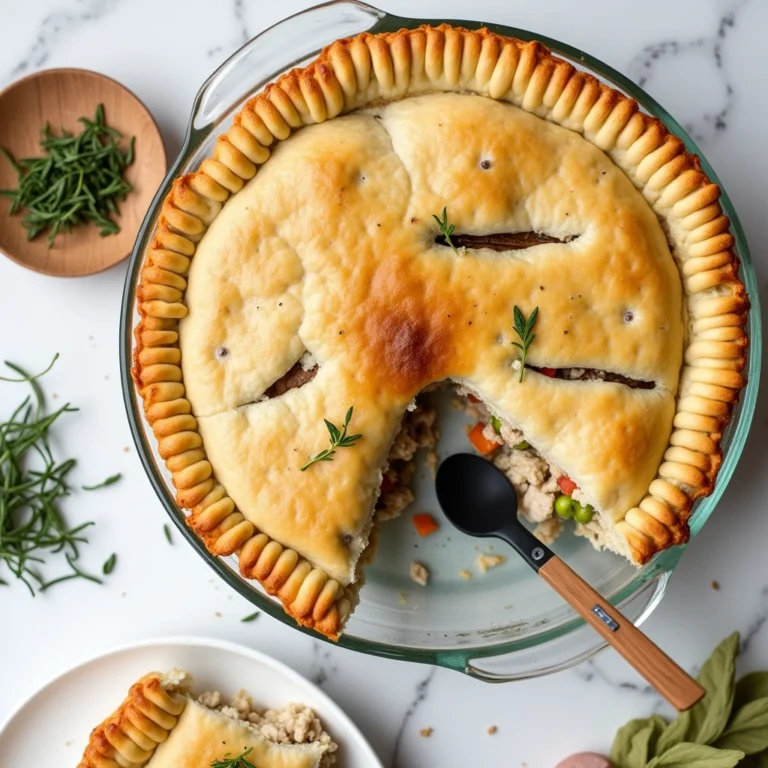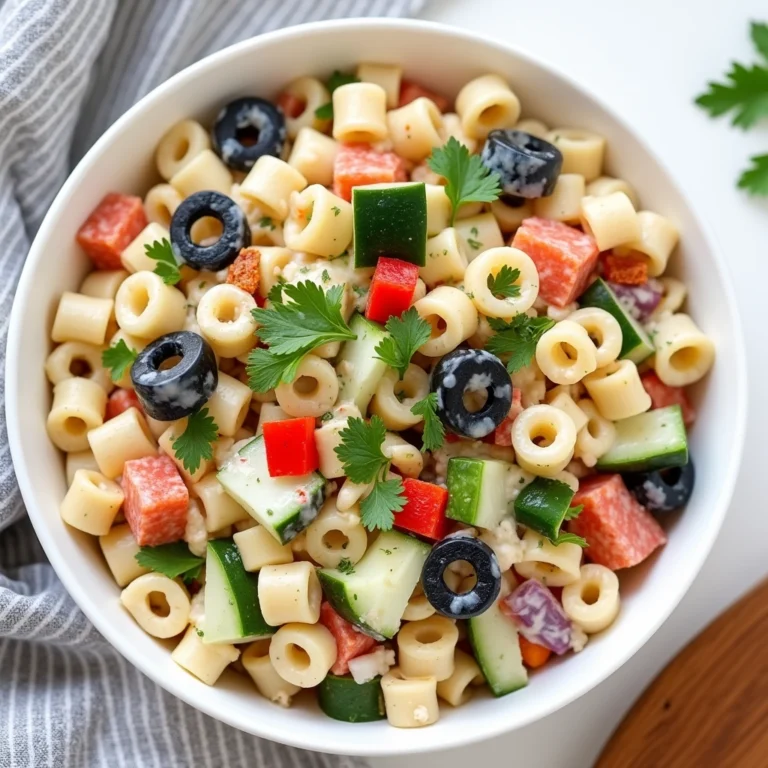How To Make Italian Ditalini Pasta: Step-by-Step Recipe
Learn how to make authentic Italian ditalini pasta with this easy recipe. Discover the perfect techniques, ingredients, and tips for creating a delicious and flavorful dish every time. Contents hide 1 A Culinary Staple in Italian Cuisine 2 Essential Ingredients for a Perfect Italian Ditalini Pasta 2.1 Ingredients 2.2 Key Ingredients You Need: Pasta, Sauce,…
Learn how to make authentic Italian ditalini pasta with this easy recipe. Discover the perfect techniques, ingredients, and tips for creating a delicious and flavorful dish every time.
A Culinary Staple in Italian Cuisine
Ditalini is widely used in traditional Italian recipes, often as the pasta of choice for pasta e fagioli (pasta and beans). Its small, manageable size makes it ideal for dishes that require an even distribution of ingredients.
For a refreshing take, try incorporating Ditalini into a delightful salad. Check out this recipe for Ditalini Pasta Salad to discover how this pasta transforms simple ingredients into a memorable dish.
Ditalini Pasta – General background and origin of Ditalini pasta.
Essential Ingredients for a Perfect Italian Ditalini Pasta
Ingredients
- 12 oz (340 g) ditalini pasta
- 2 tablespoons extra virgin olive oil
- 2 cloves garlic, minced
- 1 can (14 oz) crushed tomatoes or 4-5 fresh tomatoes, chopped
- 1/2 teaspoon dried oregano
- 1/4 teaspoon red pepper flakes (optional)
- Salt and pepper, to taste
- 1 lb (450 g) ground meat
- 1/2 cup dry white wine (optional, for deglazing)
- Fresh basil or parsley (for garnish)
- Freshly grated Parmesan or Pecorino Romano cheese (for topping)

When it comes to preparing a delicious Italian ditalini pasta, selecting the right ingredients is key to achieving the best flavor and texture. Below, we’ll break down the essential components you’ll need to create the perfect ditalini dish, from the pasta itself to the sauces and seasonings that elevate the dish.
Key Ingredients You Need: Pasta, Sauce, and Seasonings
1. Ditalini Pasta
Ditalini is a small, tube-shaped pasta that is a staple in Italian cuisine, particularly in Southern Italy. It’s often used in soups or served with hearty sauces, thanks to its ability to absorb flavors. When choosing ditalini pasta, it’s essential to pick a high-quality, durum wheat-based pasta for the best texture and bite. Look for authentic Italian brands, as they typically have a rougher surface that helps sauces adhere better.
2. Olive Oil
Olive oil is one of the cornerstones of Italian cooking. It adds a rich, fruity flavor and is perfect for sautéing vegetables, meats, or even just drizzling over pasta for a light, fresh taste. Extra virgin olive oil is the best option due to its intense, robust flavor and its health benefits, such as being high in monounsaturated fats.
3. Garlic
Garlic is a must in many Italian pasta dishes, and it works wonders in ditalini pasta recipes. Whether you’re making a simple olive oil-based sauce or a more complex tomato sauce, garlic provides depth and a fragrant base. Fresh garlic is preferable, but garlic powder can also be used in a pinch for convenience.
4. Tomatoes (Fresh or Canned)
For a classic tomato-based ditalini pasta sauce, fresh tomatoes are ideal when in season. However, high-quality canned tomatoes work just as well, offering consistent flavor year-round. San Marzano tomatoes, a type of plum tomato grown in Italy, are often considered the best for pasta sauces due to their sweet and tangy flavor. These tomatoes are perfect for creating a smooth, rich sauce.
5. Fresh Herbs
Herbs are essential for adding fragrance and complexity to your ditalini pasta. Common choices include fresh basil, oregano, thyme, and parsley. These herbs can be used to flavor the sauce or added fresh as a garnish for extra color and taste. Basil, in particular, pairs beautifully with tomato-based sauces and is a quintessential herb in many Italian pasta recipes.
6. Cheese
Cheese is often the finishing touch on a pasta dish, and for ditalini pasta, freshly grated Parmesan or Pecorino Romano are the go-to choices. These hard cheeses add a sharp, savory flavor that enhances the overall taste of the dish. For creamier sauces, ricotta or mozzarella can be incorporated for a smooth texture.
7. Vegetables (Optional)
While ditalini pasta is often served with simple sauces, vegetables can be a wonderful addition to add both nutrition and flavor. Popular options include sautéed zucchini, mushrooms, or spinach. These vegetables not only enhance the flavor profile but also add color and texture, making the dish more visually appealing.
8. Meat (Optional)
Adding meat to your ditalini pasta can turn it into a heartier meal. Ground beef, or sausage are common choices, providing a savory depth that complements the pasta. For a lighter dish, you can also opt for seafood, like shrimp or anchovies, which pair well with ditalini and offer a delightful contrast to the richness of the sauce.
By selecting the right ingredients, you ensure your ditalini pasta will be flavorful, aromatic, and satisfying. Once you’ve gathered these essentials, you’re ready to dive into the cooking process and create a dish that will truly impress your guests or family.
How to Cook Ditalini Pasta Perfectly
Cooking ditalini pasta perfectly is an essential step in creating a delicious dish. Its small, tube-like shape means it cooks quickly and absorbs flavors well, but it also requires attention to ensure it reaches that ideal al dente texture. Here’s how to cook ditalini pasta to perfection every time.
The Right Technique for Cooking Ditalini Pasta
1. Use Plenty of Water
The first step in cooking ditalini pasta is ensuring that you use enough water. A general rule of thumb is to use about 4-6 quarts of water for every pound of pasta. This helps prevent the pasta from sticking together, giving it plenty of room to cook evenly.
2. Bring Water to a Rolling Boil
Once you’ve filled your pot with water, bring it to a rolling boil over high heat before adding the pasta. This is crucial, as it ensures the pasta cooks evenly and doesn’t become mushy. Adding pasta to water that’s not boiling can result in uneven cooking and a less desirable texture.
3. Add Salt to the Water
Once the water is boiling, add a generous amount of salt — around 1-2 tablespoons per 4-6 quarts of water. The salt helps flavor the pasta as it cooks, so don’t skip this step. It also raises the boiling point of the water, allowing the pasta to cook faster and more evenly.
4. Add the Ditalini Pasta
Carefully add the ditalini pasta to the boiling salted water. Stir gently to ensure the pasta doesn’t stick together. Since ditalini is small, it can stick easily, so make sure to give it a quick stir right after adding it to the pot.
5. Cook for the Right Amount of Time
Ditalini pasta cooks relatively quickly, typically in about 8-10 minutes. However, for the best results, check the pasta package for the recommended cooking time, as it can vary slightly depending on the brand. Start checking for doneness around 7 minutes by tasting a piece. The pasta should be al dente, firm to the bite but not hard or crunchy.
6. Stir Occasionally
To prevent the pasta from sticking together, stir it occasionally during the cooking process. This helps ensure that each piece cooks evenly and doesn’t clump together at the bottom of the pot.
7. Reserve Pasta Water
Before draining your pasta, it’s a good idea to save a cup of the pasta cooking water. This starchy water can be added to your sauce to help it adhere better to the pasta and create a smoother consistency. This step is particularly useful if you’re making a sauce that requires a bit of thinning or extra texture.
8. Drain the Pasta
Once the ditalini pasta is cooked to al dente perfection, drain it in a colander. Be sure not to overcook the pasta, as it will continue to soften even after you remove it from the water. If you’re using the pasta in a sauce, you can drain it directly into the sauce pan to finish cooking and absorb more of the sauce’s flavors.
9. Don’t Rinse the Pasta
While it might be tempting to rinse your pasta, avoid doing so, as rinsing removes the starchy coating that helps sauces adhere. For the best results, leave the pasta as is after draining. If you’re not immediately adding the pasta to a sauce, you can toss it with a little olive oil to prevent it from sticking.
By following these steps, you can cook ditalini pasta perfectly every time. The key is attention to detail: from using plenty of water and salt to testing for doneness and saving pasta water for the sauce. This ensures that your ditalini pasta will be perfectly tender yet firm, ready to absorb whatever delicious sauce you’ve prepared.
Pairing Ideas: Elevate Your Meals
Looking for inspiration to pair Ditalini with other Italian flavors? Consider combining it with creamy sauces or light vinaigrettes. For a complementary dish, explore this recipe for Garlic Parmesan Chicken Pasta — a hearty option that pairs beautifully with the simplicity of Ditalini pasta.
Tips and Tricks for Cooking the Best Italian Ditalini Pasta

To make your Italian ditalini pasta stand out, a few expert tips and tricks can make all the difference. These simple yet effective steps will help you create the best pasta, whether you’re cooking it for a family meal or a special occasion. Here’s how to ensure your ditalini pasta is always a success.
1. Use High-Quality Pasta
Not all pasta is created equal. To ensure a superior texture and flavor, opt for high-quality pasta made from durum wheat semolina. Authentic Italian brands often use traditional methods, such as bronze-drawing, which gives the pasta a rougher texture that helps sauces cling better. Investing in premium pasta will make a noticeable difference in the final dish.
2. Add Salt to the Water
One of the simplest yet most effective tips for cooking perfect pasta is to season the water. Use about 1-2 tablespoons of salt per 4-6 quarts of water. This not only enhances the flavor of the pasta but also helps the pasta absorb the sauce more effectively. It’s essential to add salt after the water starts boiling to avoid any impurities from the salt interfering with the boiling process.
3. Avoid Overcrowding the Pot
When cooking ditalini pasta, it’s important not to overcrowd the pot. If you add too much pasta at once, it can lower the temperature of the water and cause the pasta to stick together. Instead, cook the pasta in smaller batches if necessary, ensuring there’s enough room for it to cook evenly.
4. Stir Gently and Frequently
Stir the pasta occasionally while it cooks to prevent it from sticking together. This is especially important for small pasta shapes like ditalini. Gently agitate the pasta with a spoon to separate the pieces and ensure even cooking. Be careful not to stir too vigorously, as this can break the fragile pieces of pasta.
5. Test for Al Dente Texture
For perfect ditalini pasta, cook it until it reaches an al dente texture—firm to the bite but not hard. The pasta should retain its shape and a slight chew. Begin tasting the pasta a minute or two before the suggested cooking time is up, and test it for doneness. Keep in mind that the pasta will continue to cook slightly after you drain it, especially if you’re mixing it into a hot sauce.
6. Reserve Some Pasta Water
Before draining your pasta, always reserve a cup of the cooking water. The starch in the pasta water is an excellent natural thickener for sauces, helping them adhere to the pasta. If your sauce is too thick, you can use some of the pasta water to thin it out to the perfect consistency. It’s a simple yet crucial step that elevates the flavor and texture of your final dish.
7. Don’t Rinse the Pasta
While rinsing pasta may seem like a good idea to remove excess starch, it’s actually counterproductive. The starch helps the sauce cling to the pasta, so when making a sauce, don’t rinse the pasta. If you’re not using the pasta immediately, toss it with a bit of olive oil to prevent it from sticking together while it sits.
8. Cook the Pasta to Finish in the Sauce
For the best flavor, it’s recommended to finish cooking your ditalini pasta in the sauce. After draining the pasta, add it to your simmering sauce and let it cook for another 2-3 minutes. This allows the pasta to absorb the flavors of the sauce, resulting in a more cohesive and flavorful dish. If the sauce is too thick, you can add some reserved pasta water to help loosen it.
9. Add Fresh Herbs for Extra Flavor
Incorporating fresh herbs at the right moment can make a huge difference in your ditalini pasta dish. Add fresh basil, oregano, or parsley to the sauce toward the end of the cooking process for an aromatic lift. You can also sprinkle some freshly chopped herbs over the dish just before serving for added color and flavor.
10. Experiment with Flavorful Sauces
Ditalini pasta pairs well with a variety of sauces, from simple olive oil and garlic to rich tomato-based or creamy sauces. If you want to get creative, try making a pesto sauce or adding roasted vegetables or meats. The versatility of ditalini allows you to experiment and customize the dish according to your preferences.
11. Finish with Grated Cheese
For the perfect final touch, grate some freshly Parmesan or Pecorino Romano cheese over your ditalini pasta. The cheese adds a rich, savory flavor that enhances the dish. You can also use ricotta for a creamier texture or mozzarella for a more indulgent experience.
By following these tips and tricks, you can consistently cook the best Italian ditalini pasta. From selecting high-quality ingredients to perfecting the cooking technique, these steps will help you create a flavorful and satisfying dish every time. Whether you’re making a classic sauce or trying something new, ditalini pasta offers endless possibilities to explore and enjoy.

Frequently Asked Questions about Italian Ditalini Pasta
Here are some common questions and answers about Italian ditalini pasta, helping you perfect your cooking and understanding of this beloved dish.
1. Can I Use Other Types of Pasta for This Recipe?
While ditalini pasta is a great choice for its small, tubular shape that absorbs sauces well, you can substitute it with other small pasta shapes like elbow macaroni, small shells, or orecchiette. However, using ditalini provides an authentic experience and perfect texture for certain dishes, especially soups and stews.
2. How Do I Store Leftover Ditalini Pasta?
If you have leftover cooked ditalini pasta, store it in an airtight container in the refrigerator for up to 3-4 days. To reheat, you can warm it gently on the stove with a little extra sauce or in the microwave. If you’ve already mixed it with sauce, it may last for the same amount of time. For longer storage, you can freeze cooked ditalini pasta, although it may alter the texture slightly upon reheating.
3. Can I Make Ditalini Pasta from Scratch?
Yes, you can make ditalini pasta from scratch by mixing semolina flour and water to form a dough, then rolling it out and cutting it into small tubes. Making pasta at home is a rewarding process, but it does require time and effort. If you’re new to pasta-making, start with a more forgiving shape before attempting ditalini.
4. Is Ditalini Pasta Gluten-Free?
Traditional ditalini pasta is made from durum wheat semolina, which contains gluten. If you’re following a gluten-free diet, look for gluten-free versions of ditalini, which are often made with rice flour or corn flour. These substitutes will offer a similar texture, but the flavor may differ slightly from the traditional variety.
5. What Can I Serve with Ditalini Pasta?
Ditalini pasta is incredibly versatile and pairs well with a wide range of dishes. It’s most commonly served in soups like Italian minestrone, but it also works well with tomato-based sauces, creamy sauces, or vegetable dishes. You can serve it with a protein, like grilled chicken or sausage, or enjoy it on its own as a side dish.
6. How Do I Know When Ditalini Pasta Is Done?
Ditalini pasta should be cooked to al dente, meaning it should be firm to the bite but not hard. The cooking time for ditalini typically ranges from 8 to 10 minutes, but the best way to check is to taste a piece a minute or two before the recommended cooking time ends. If it’s soft but still has a slight chew, it’s ready to be drained.
Conclusion
In conclusion, Italian ditalini pasta is a versatile and delightful ingredient in many Italian dishes, from classic soups to hearty pasta meals. By following the right techniques for cooking, selecting the best ingredients, and experimenting with different sauces and flavors, you can create a dish that brings the authentic taste of Italy into your kitchen. Whether you’re a seasoned cook or just starting out, ditalini pasta is an excellent choice for crafting flavorful, satisfying meals. With these tips and tricks, you’re well on your way to making the perfect Italian ditalini pasta every time.
Take a look at Pasta Shapes Explained – Comprehensive guide to different Italian pasta shapes and their ideal uses.
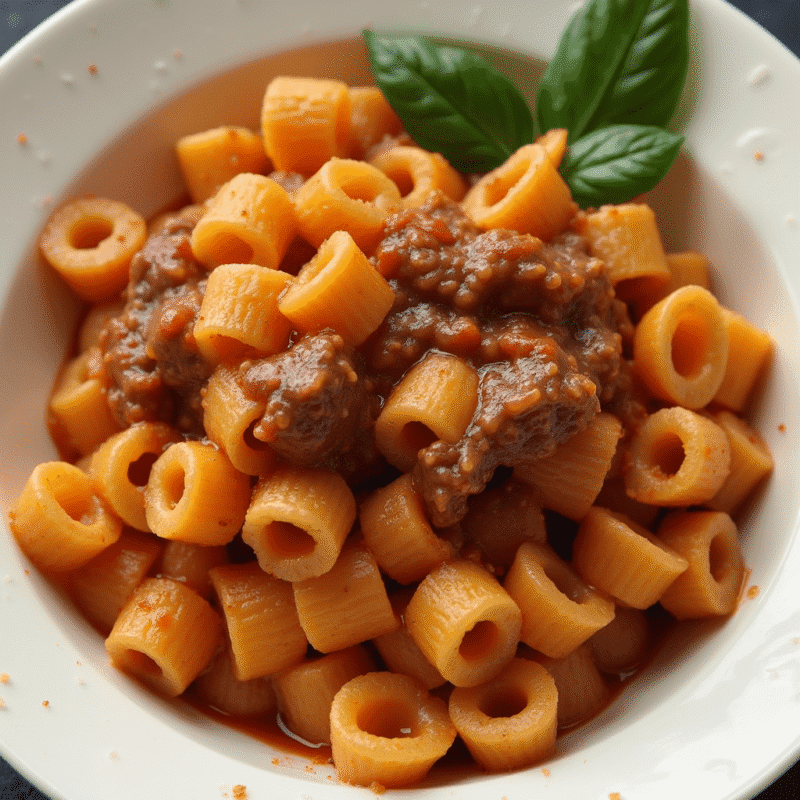
How To Make Italian Ditalini Pasta: Step-by-Step Recipe
Ingredients
Method
- Cook the Pasta: Bring a large pot of salted water to a boil. Add the ditalini pasta and cook for 8-10 minutes, stirring occasionally, until al dente. Drain and set aside, reserving 1 cup of pasta water.
- Prepare the Sauce: In a large skillet, heat olive oil over medium heat. Add minced garlic and cook until fragrant (about 1 minute). Add the tomatoes, oregano, red pepper flakes, and a pinch of salt and pepper. Let the sauce simmer for 5-7 minutes.
- Combine Pasta and Sauce: Add the cooked ditalini pasta to the sauce, mixing well. Add some reserved pasta water if the sauce is too thick. Simmer for an additional 2-3 minutes to let the flavors combine.
Nutrition
Notes
- You can add vegetables such as zucchini or spinach to make this dish even more flavorful.
- For a richer sauce, you can stir in some heavy cream or add ground meat like sausage or beef.
- This recipe is versatile—feel free to experiment with different herbs and spices for added depth of flavor.


